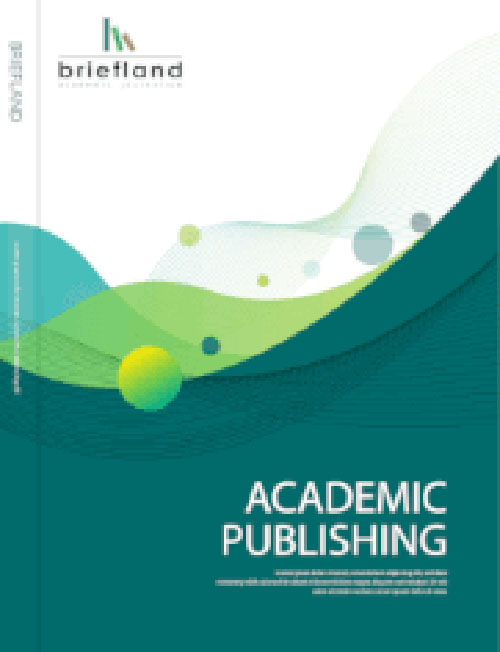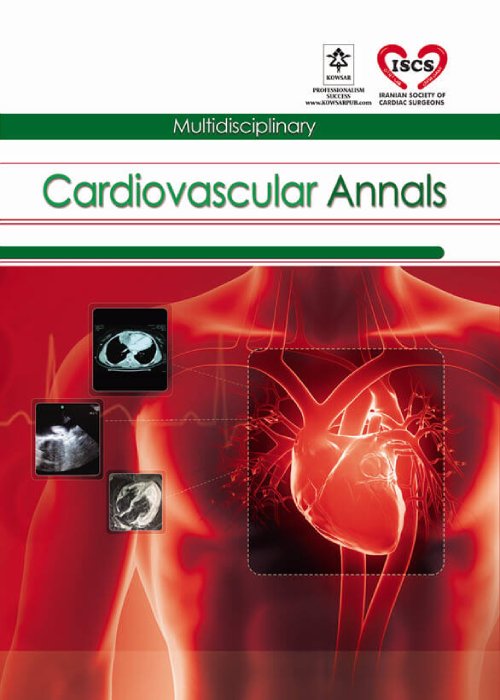فهرست مطالب

Multidisciplinary Cardiovascular Annals
Volume:13 Issue: 1, Jan 2022
- تاریخ انتشار: 1401/05/09
- تعداد عناوین: 5
-
-
Page 1Introduction
This review aims to summarise the current trend and practice for management of Type B aortic dissection (TBAD) across the UK. We also aim to highlight the service specification and configuration as well as the current portrayed outcomes published from different sources within the UK.
MethodsWe carried out a comprehensive literature search on multiple electronic databases including PUBMED, Scopus and EMBASE in order to collate all research evidence on TBAD service line in the UK. We also navigated through official reports published from different sources within the UK specifically highlighting aortic dissection.
ResultsThe UK’s research into TBAD falls short when compared to international counterparts due to a lack of evidence related to TBAD incidence and outcomes. Some TBAD patients are managed at unspecialised centres and others are lost to follow-up. The UK’s vascular surgery workforce is expanding at a very slow rate and the specialised aortic units are consistently failing to meet the waiting time standards for treatment.
ConclusionsRestructuring and service reconfiguration are imperative for outcome reporting for TBAD affected population cohort. TBAD should be centralised towards hospital with concentrated level of experience and expertise.
Keywords: Type B Aortic Dissection, Aortic Dissection, Aortic Surgery, United Kingdom -
Page 2Context
The prevalence of non-alcoholic fatty liver disease (NAFLD) is about 30% in general population. Since conditions such as obesity, hyperlipidemia, diabetes mellitus, metabolic syndrome and insulin resistance have been named as some of the most important risk factors, as the prevalence of these conditions continues to rise, NAFLD becomes an increasingly significant problem. Endothelial dysfunction, increased pulse wave velocity, increased coronary artery calcification, and the development of atherosclerosis appear to be influenced by NAFLD. Considering this concern, this narrative review investigated the prevalence of CVD in NAFLD patients.
Evidence AcquisitionThis narrative study evaluates the prevalence of CVD in NAFLD patients, as well as several variables that influence their association. In this study our search strategy engines include PubMed, Scopus, MEDLINE, and Google Scholar.
ResultsPrevious research suggests that as nonalcoholic steatohepatitis (NASH) and liver fibrosis progress, there is an increased risk of CVD, most likely due to the hepato-cardiovascular axis’ effect. The correlation between NAFLD and metabolic disorders suggests that fatty liver disease may cause cardiovascular disorders (CVD).
ConclusionsAs a result, the management of both NAFLD and the risk of CVD are aimed at the same target, which is to reduce insulin tolerance by lifestyle modifications. Moreover, monitoring for CVD and proper pharmacotherapy is essential in individuals with severe NAFLD and those who are at increased risk for ischemic heart disease.
Keywords: Ischemic Heart Disease, Nonalcoholic Fatty Liver Disease, Coronary -
Page 3Background
To evaluate the ability in initial prenatal diagnosis of congenital heart disease (CHD), the most common considerable and also fatal congenital disorder. It can be achieved by ultrasound (US) or echocardiography (FE) which are performed by radiologists and pediatric cardiologists, respectively.
ObjectivesThe study aimed to compare the results, confirm the modality that promotes the effectiveness of final diagnosis and optimize its management.
MethodsA retrospective cross-sectional study on referred pregnant women was conducted in Imam Reza hospital, Mashhad, Iran from 2012 to 2019. Fetal echocardiography was performed by one skilled professional which was compared to ultrasound anomaly scan reports of the same fetuses. Data were analyzed using SPSS ver. 18. The categorical variables were demonstrated as percentages and the agreement between two methods was evaluated by Cohen’s kappa coefficient (K > 0.4, P < 0.05 as significant cut-off). The sensitivity and specialty, as well as the accuracy, positive and negative predictive values, were all calculated.
ResultsOut of 312 examinations of fetuses, 56 cases were Major cardiac diseases and 62 were Minor cases. FE discovered that 14 out of 33 normal US cases were abnormal. In addition, the US considered 52 cases as structural cardiac abnormalities, of which only 34 cases were verified by FE. The most prevalent cardiac anomaly discovered by FE was the intra-cardiac echogenic focus (12.17%), compared to 7.05% of US diagnoses. The methods considered VSD the most common major, septal CHD with different quantities. The US overdiagnosed 71.4% of cases, whereas underdiagnosed 87.5% of VSDs. The US was unable to detect 11 out of 13 complex-CHDs (84.61%). Except for one percent, the US did not report AVSD. Arrhythmia was detected in 37 cases, with the US correctly diagnosing six of them. The US underdiagnosed 35 major (mostly septal defects 45%) and 26 minor structural cases; additionally, the US overdiagnosed 10 minor and 7 major cases. The methods agreed with the content of 11.53% of the CHD diagnosis. The sensitivity, specificity, and accuracy of the US method in comparison to FE for CHD diagnosis were calculated 62%, 74.2%, and 68.7% respectively. The positive and negative predictive values were 66.1% and 70.27%, respectively.
ConclusionsThere was a significant correlation between the results of US and FE, but there was no significant agreement in definite diagnosis, particularly for major CHDs. Although the FE is still the best modality; the US by expert sonographers is so contributory and a screening method. It is recommended to do FE at least once during pregnancy, but it is not currently accepted according to the updated guidelines.
Keywords: Echocardiography, Congenital Heart Disease, Ultrasound, Sonograghy, Fetalechocardiography -
Page 4
We report the case of a 63-year-old female patient who was urgently admitted from electrophysiology laboratory (EP Lab) to operating room (OR) with hemodynamic instability and hemothorax. The dual-chamber pacemaker had been implanted 15 years ago. After median sternotomy she was evaluated for perforations and raptures of cardiac chambers and status of right ventricle (RV) lead of permanent pacemaker (PPM) by the surgeon. Evaluations revealed that RV and right atrium (RA) have been ruptured and tricuspid valve has been damaged as a result of dislodgment of RV PPM lead secondary to manipulations in electrophysiology (EP) lab. This lead was withdrawn through SVC and ruptures were repaired and tricuspid valve was replaced. The epicardial pacemaker was placed by the surgeon. After surgery, the patient was transferred to ICU, after three days she was discharged to ward and after 5 days from surgery she was discharged from hospital in good condition.
Keywords: Right Ventricle, Electrophysiology, Perforation, Cardiac Surgery -
Recurrent Left Ventricular Apical Pseudoaneurysm at the Site of Previous Patch Repair; a Case ReportPage 5
Our case was a 70-year-old male with a past history of coronary artery bypass graft surgery and true aneurysmectomy seven years ago who presented with chest pain and dyspnea. Echocardiography demonstrated scarred and aneurysmal apex (6.15 cm ×2.19 cm) with a small rupture just at most protruding part of it, to and from flow across this rupture site resulted in slow oozing of blood into pericardial sac with mobile clot in apex, clot formation in pericardial sac extended into both apical parts and distorted apical and apicoseptal geometry without communication with right ventricular cavity. Cardiac MRI (CMR) showed the following data: large apical pseudoaneurysm at the site of ruptured patch (depth: 46mm, width: 60mm), narrow orifice (5mm), septated left ventricular apical outpouching surrounded by apical layers and included clots in different sizes and ages. He underwent a successful surgical operation. In this case, CMR provides excellent images essential for patient management.
Keywords: Pseudoaneurysm, Aneurysmorrhaphy, Coronary Artery Bypass Graft Surgery


